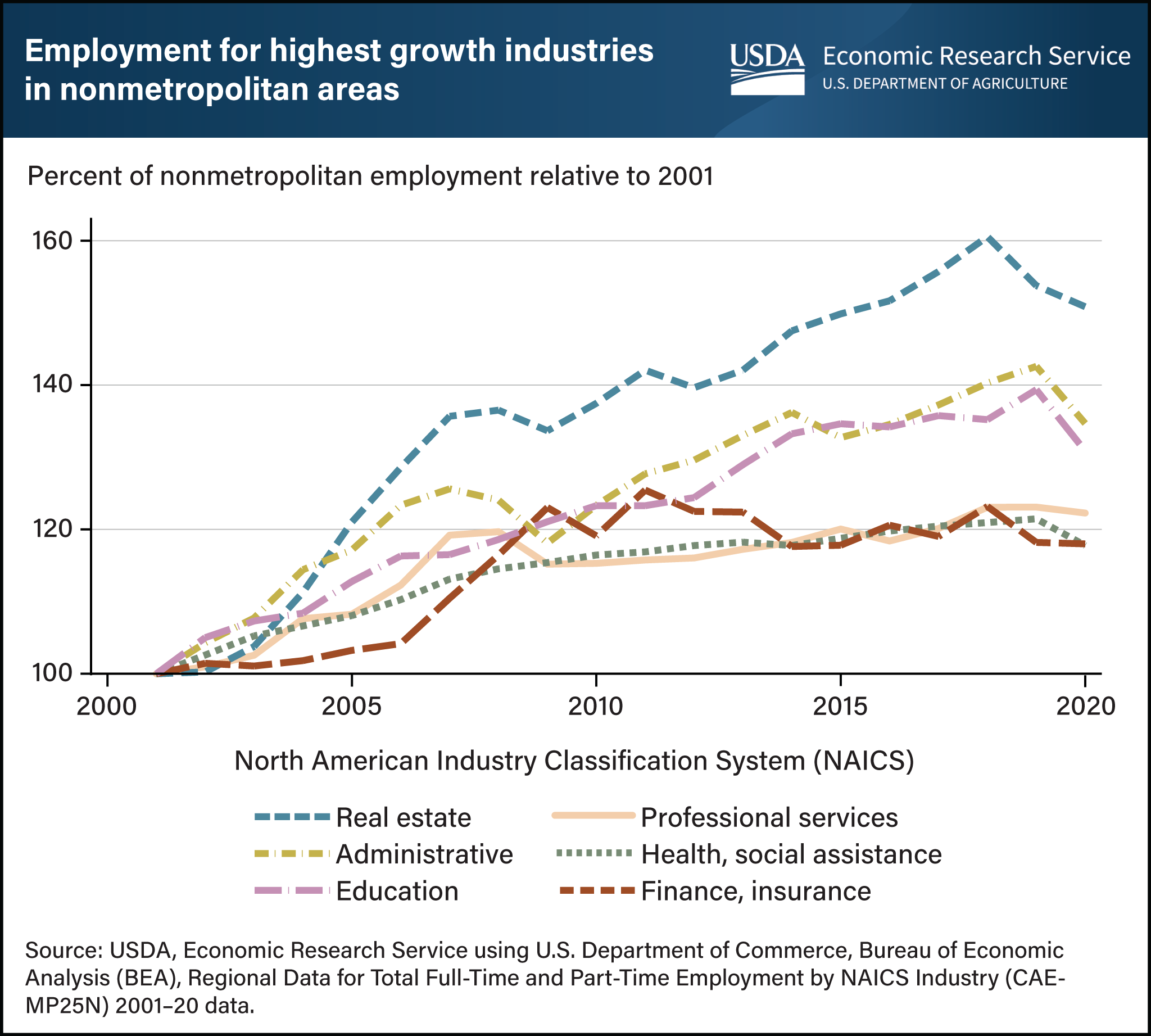Rural job growth has shifted toward high-skill workers since 2001
- by James C. Davis
- 1/17/2023

Over the last two decades, the strongest rural job gains were in smaller industries that tend to employ high-skill workers. The highest growth was in the real estate industry, which includes lessors of nonresidential buildings, real estate agents, brokers and property managers, and industrial machinery and equipment rental and leasing, as identified by the U.S. Census Bureau’s North American Industry Classification System (NAICS). Also showing rapid growth was the administrative services industry, which includes office administration, facilities support, business support services, security services, conventions and trade shows, and waste management and treatment. Other rural industries that grew over the past two decades were health care and social assistance; professional, scientific, and technical services; educational services; and finance and insurance. The growth of these industries represented a shift in rural production toward industries that employ higher shares of high-skill workers. Consistent with this shift, the percent of rural college-educated workers increased from 21.5 percent in 2012 to 23.8 percent in 2019, although these rates have remained lower than the share of college-educated urban workers (38 percent in 2019). The six largest rural industries in terms of employment during this period were health care and social assistance; accommodation and food services; government; retail; agriculture; and manufacturing. Only the health and social assistance industry was at the same time one of the fastest-growing rural industries and one of the six largest rural industries in terms of employment. This chart appears in the USDA, Economic Research Service report Rural America at a Glance: 2022 Edition, published in November 2022.

